Installation of RF stations continues in NICA Collider tunnel
News, 13 December 2023
The Institute of Nuclear Physics of the Siberian Branch of the Russian Academy of Sciences and the Laboratory of High Energy Physics at JINR have started work on installing stations of high-frequency accelerating systems RF-1 and RF-2 in the rectilinear gaps of the NICA Collider. VBLHEP employees, together with colleagues from Novosibirsk, install resonators of RF systems in their places in the tunnel and warm them up to achieve a working vacuum. At the same time, rooms for the resonator control system are currently prepared. Vacuum equipment specialists install all the necessary seals, pumps and heating control systems.
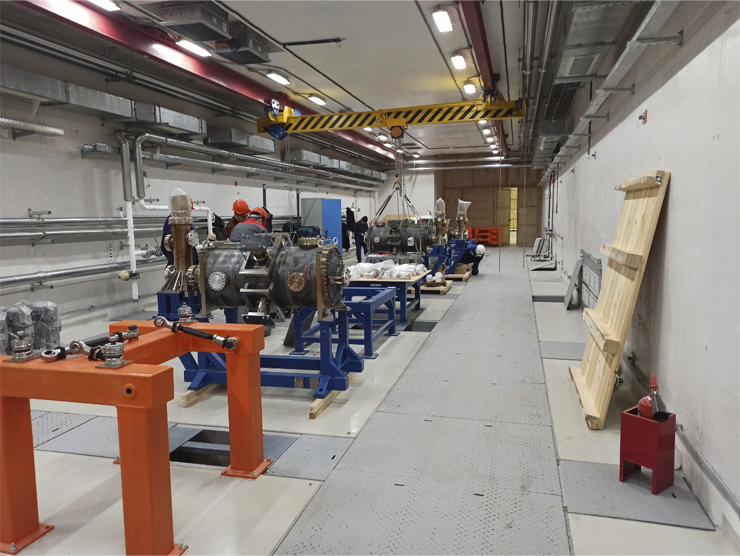 RF stations assembly in the northeast straight section
RF stations assembly in the northeast straight section
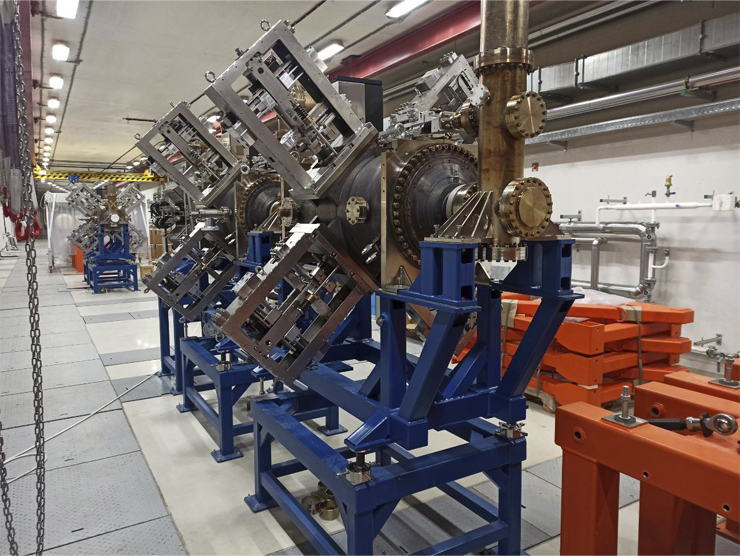 RF-1 and RF-2 stations being prepared for the warm-up
RF-1 and RF-2 stations being prepared for the warm-up
On 11 December, the operating warm-up temperature was reached. As Head of the Group of Accelerating and Developing RF Systems at the VBLHEP Collider Alexander Malyshev said, such work can be carried out at temperatures from 220 to 300 ° C – the specific temperature depends on the pumping rate and what gases remain inside. In this case, hydrocarbons, the occurrence of moisture, argon and nitrogen interfere with the process the most. “To obtain a good vacuum in the accelerator, when the flying particle does not collide with the residual gas, the vacuum volume must be completely cleared. Warming up accelerates the diffusion of residual gas from the inner surface of the vacuum chamber”, Alexander Malyshev commented.
Specialists face two difficulties. Since the resonator of the RF system has a geometrically complex structure, heating occurs unevenly and depends on such parameters as the ability to wind a sufficient number of heaters and well isolate the heated area from heat loss. In addition, there are places in the resonator that, in principle, cannot be heated. Thus, in the outer part of the RF-1 resonator, amorphous iron is used that does not have a crystal lattice and therefore has good magnetic permeability, but does not tolerate heating. “In conditions where the outer part of the resonator should not heat up above 80 °C, but the inner part, on the contrary, should warm up, many layers of insulation and systematic control of even heating are required,” Alexander Malyshev explained.
The resonators will be kept at elevated temperatures for several days, followed by leak testing. “Colleagues from Novosibirsk that have developed these resonators need to be shown that the supplied equipment has the required parameters,” Alexander Malyshev noted.
Upon reaching the design parameters of the vacuum, further work will be related to the control system for RF stations: specialists will be engaged in connecting resonators, installing and connecting generators and signal cables.
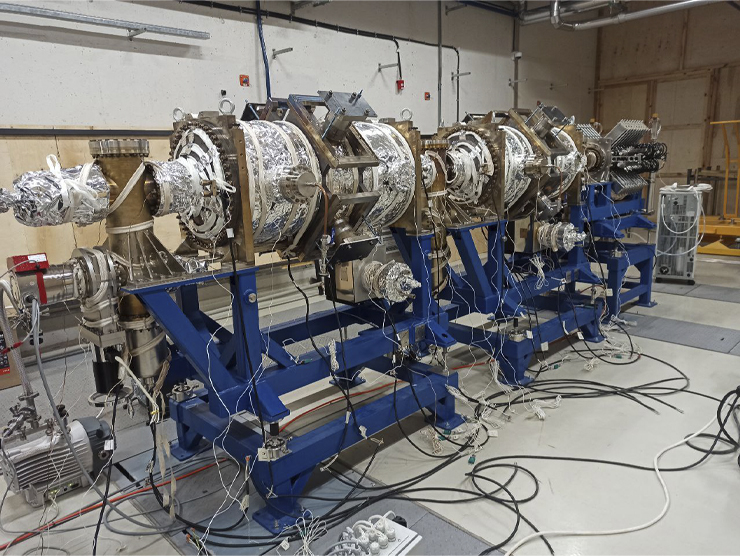 Stations being prepared for the warm-up
Stations being prepared for the warm-up
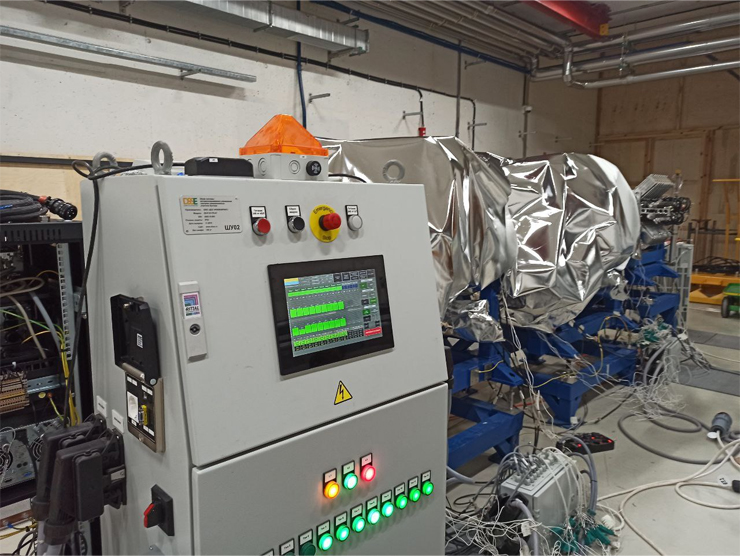 Warming up process. Temperature readings in different areas are displayed on the monitor
Warming up process. Temperature readings in different areas are displayed on the monitor
Currently, the wiring of utilities in two of the six rooms for the resonator control systems is prepared, including pipelines for the water cooling system of the resonators and generators, power routes and signal cables.
“After all this, the generators will be combined to the resonators, afterwards, the electrical testing stage will begin, when each individual resonator will be tuned, tested and its electrical parameters will be checked,” Alexander Malyshev said.
He added that this is the second group of resonators , which is installed in the collider. In summer, resonators were installed on the lower ring of the collider. “Today, one RF-1 resonator and four RF-2 resonators are installed on the upper ring. Thus, this year, the installation of all resonators of the RF-1 and RF-2 systems will be completed,” Alexander Malyshev concluded.
According to the project, the collider will have three high-frequency systems in total. RF-1 is responsible for accumulating the required beam intensity and extra acceleration of particles if required. RF-2 is used to form the required number of bunches and preliminary grouping of the beam. RF-3 will serve to compress particle bunches to a design length of 0.6 m – the resonator for it is under development and the third system itself will operate at the stage of full configuration of the NICA Complex.
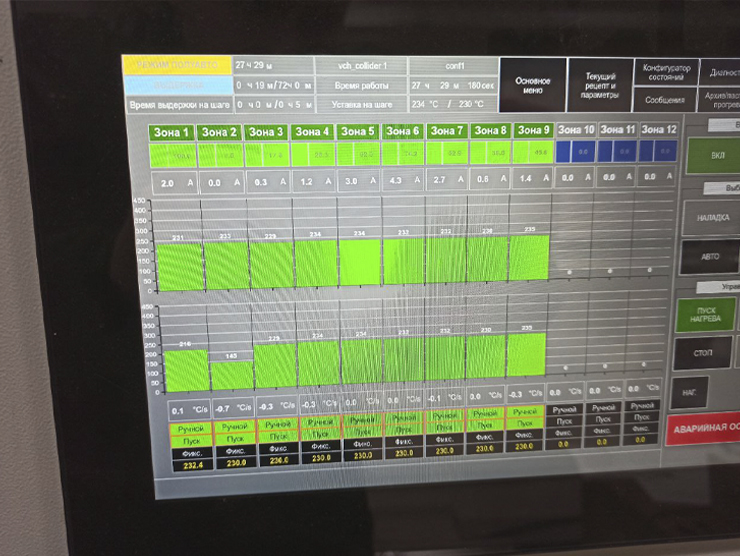 Monitor with temperature readings. Warm-up operating temperature reached
Monitor with temperature readings. Warm-up operating temperature reached
